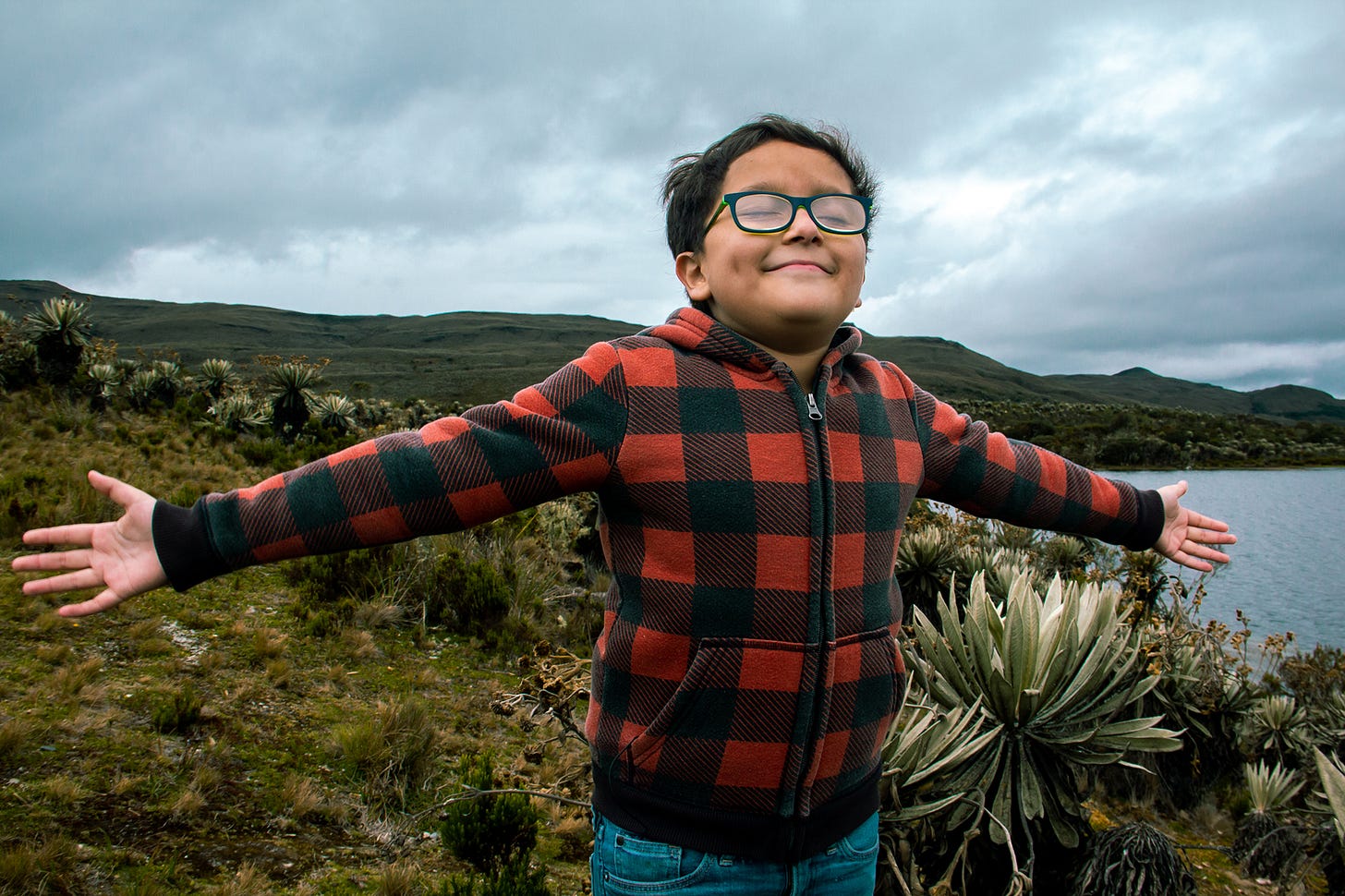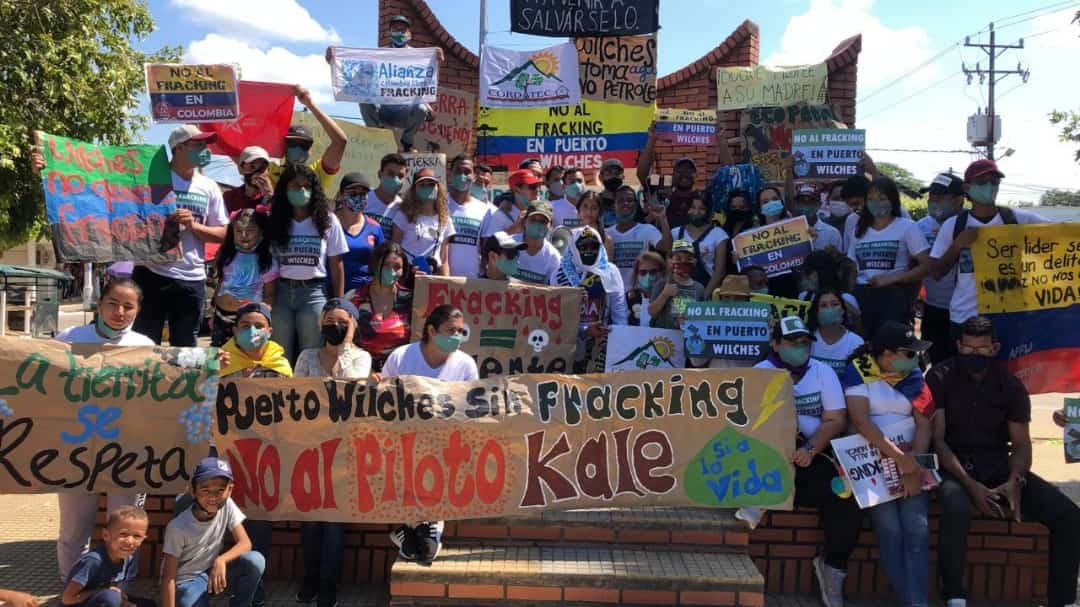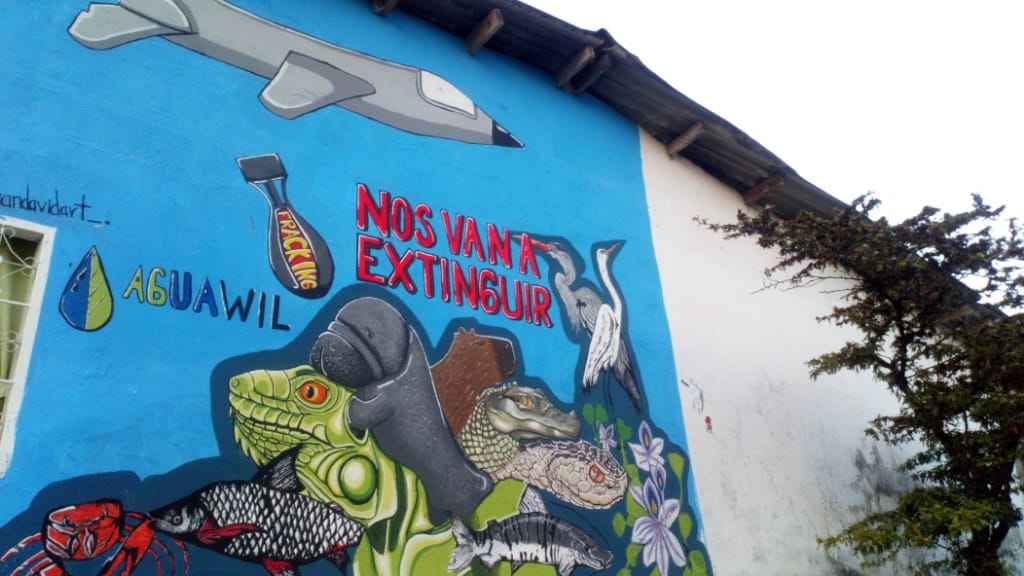#56 - Barely a teenager and threatened with death: being a climate activist in Colombia
By María Paula Rubiano in Medellín, Colombia.

When I became an environmental reporter in 2017, I thought I’d have a break from the violent news I had to cover as a justice reporter in Colombia. I was wrong. In the last four years, I’ve seen how violence against environmental and social leaders keeps escalating.
After occupying the third and second places in Global Witness’ “deadliest countries for environmental leaders” list in 2017 and 2018, in 2019, my home country, Colombia, became the deadliest place on Earth for those who defend nature. I knew things were bad. But when in January of this year, that violence reached an 11-year-old environmental leader, it felt like we were descending towards a new, darker path as a society.
On January 17, Francisco Vera Manzanares received a death threat on his Twitter account after he asked the president to guarantee internet access to all children in the country so that they could go to school during the pandemic.
“This is a symptom of a society that has completely lost its understanding of humans rights,” says Lourdes Castro García, director of Somos Defensores, a non-profit which studies the threats that human rights leaders face in Colombia. “The fact that an 11-year-old is threatened instead of admired for his deep understanding of human rights shows how stigmatized human rights advocacy is in this country.”
Public youth
Vera became a public figure in 2019, when he spoke in front of the Colombian senate. A few months earlier, he and six other children from his fourth-grade class started the activist group Guardianes por la Vida (Guardians for Life) to bring attention to environmental problems in their home town, from water pollution to the mistreatment of animals. In their first protest, they marched from Vera’ house to the central square of his home town in central Colombia, picking up waste. Vera’s grandmother followed them to make sure nothing bad happened –after all, they were just kids.

Vera’s activism was partially inspired by his mum, Ana María Manzanares, a feminist and animal rights advocate. His father wasn’t always supportive. “My dad told me, ‘son, think about this, people might think badly of you because of this,” Vera recalls. “But when he saw the video my grandma took of me giving a speech that no one listened to [he laughs], he got me a megaphone.”
Guardianes por la Vida started growing slowly. Now it has 220 members all over Colombia, 40 members in Mexico, 20 in Argentina, and ten in Venezuela. The pandemic made Vera realize the harsh conditions other kids face. “One of our members lives in a house that has no internet; he doesn’t have a mobile phone either. So one of the older members in his city has to go all the way to the kid’s home so we can talk,” Vera explains. Other kids from indigenous communities are having the same issues. This reality is what partially inspired the tweet that got him threatened.
Outside the radar
The threat against Vera caused a national and international uproar. Michelle Bachelet, the UN’s high commissioner for human rights, sent Vera a letter expressing her support. On February 24, the European Union made him a goodwill ambassador.
But not all young activists have the same luck. Unfortunately, as Castro explains, most of the environmental leaders in the country fight hyper-localized battles which leaves their cases outside everyone’s radar.
“The worst part is that the official version always attributes the violence to drug trafficking or armed groups in the regions, but that’s just too simplistic,” Castro says. “Often times, a [youth] leader is a pebble in the shoe for a very particular web of interests.”
That’s the case of the young leaders from AguaWil. They oppose the arrival of fracking to their town, Puerto Wilches, a village on the banks of the Magdalena river heavily hit by the decades-long Colombian internal conflict.
The group was founded in December 2020, and their protests consist mainly of painting street art, pacific marches across Puerto Wilches, plastering the town walls with posters, and meeting with people in remote rural settlements to explain the negative consequences of fracking. In the three months they’ve done this work, five members of the group have received death threats.

One of them, 20-year-old Natalia Morales, had to move out of town after a man entered her house one night and threatened her in front of her 8-year-old sister. Others have received phone calls. The day before one of the largest marches they’ve led, the group says that one of their core members had a gun pointed at her while walking down the street with her father. They told her not to go the march the following day, or she’ll face the “consequence for her actions.” She went anyway, “as an act of resistance,” Morales told me.
“This is a systematic attack, and it has made many kids scared,” Morales says. Many parents have asked –or straight-up forced– kids to stay away from the movement because of the town's violent past. “In my case, I had to leave [Puerto] Wilches because some members of my family started telling my father that I was going to get him killed because I was talking about fracking,” she explains.
A way out of this situation is not easy. Despite calls from the European Union and the UN, the Colombian government seem uninterested in protecting environmental and human rights advocates, says Castro. Almost all cases go cold before they’re solved. “This will not stop until the government actually tries to understand what’s going on,” she says.
Meanwhile, Vera and Morales told me it’s their intention to keep working. “I’m convinced that what we’re trying to do is good and important,” Vera told me. “Consciousness about these issues has arrived in Latin America, and we understand now that you can’t measure development using just one lens.”
In early 2019, I marched on the streets of New York City alongside thousands of young climate activists that followed Greta Thunberg. In my reporting, I found that most of the climate strikes from 2019 took place in the northern hemisphere. “Where were the young environmental leaders from my region?,” I kept wondering, “Why didn’t they take the streets?” Now, after talking to Vera and Morales, I think I finally have an answer.
María Paula Rubiano is a Colombian freelance science journalist. She started her career in El Espectador newspaper and in December 2020 graduated with a master’s degree from New York University’s Science, Health and Environmental Reporting program. She is currently an early-career fellow at The Open Notebook. Follow her on Twitter at @pau_erre
This post was funded by a climate investigation grant awarded to From A Climate Correspondent by the European Federation for Science Journalism (EFSJ) and funded by the BNP Paribas Foundation.
If you’d like to support us to publish more journalism from the front lines of climate change, please consider supporting us with a regular donation on Patreon or inviting us for a one-time coffee over at KOFI. You can also support use by signing up and sharing this article with others!
Must-reads from the region
In Ecuador, nine girls stopped Chevron-Texaco from burning natural gas near their communities in the Amazon forest, José Antonio Paz Cardona (@antoniopazc), Mongabay LatAm
In February, the Provincial Court of Sucumbíos ruled in favour of nine girls who argued that Chevron-Texaco was violating their right to a safe and healthy environment with 447 flares that burn natural gas all day, every day, in the Ecuadorian Amazon. But while the ruling is good news, it’s uncertain when or how the companies will turn off the flares.
The story of a climate correspondent exiled from Bolivia because of his reporting against silver mining in a Unesco Humanity’s Heritage site, Juan José Toro (@Torojj), El País
The Potosí Hill, in the Bolivian Andes, is the world’s largest silver deposit, and was key in establishing Spain’s colonial power during the 1500s. In 1987, the hill was declared as a Unesco Humanity’s Heritage site worth preserving and restoring because of its historical significance. In this story, reporter Juna José Toro explains how his reporting on how silver mining is still destroying the site forced him into exile.
To save Colombia’s inland fisheries, researchers are listening fish songs,Daniela Quintero Díaz (@DanielaQuinterd), El Espectdor
Bocachicos are the most important freshwater fish for inland fisheries in Colombia. Still, climate change, hydropower development and water pollution have reduced catches of the species, endangering the livelihood and food security of millions. Researchers just described, for the first time, bocachico’s mating songs. With this information, they can now map the sounds of the rivers where bocachicos move, looking for key conservation hotspots.
Understanding the illegal trafficking of Jaguar parts in Latin America,Yvette Sierra Praeli (@yvettesierra), Mongabay LatAm
Mongabay just published an interview with John Polisar, a biologist who has studied jaguar illegal trafficking in Latin America for over 20 years. In the interview, Polisar explains how the pandemic, the decline of Asian big cats, and human-jaguar conflicts are bringing the species to a dangerous low.
What else I’m reading
If you want to gain a deeper understanding of what’s going on with environmental leadership in Latin America, I can’t recommend enough the collaborative effort called “Land of Resistants.”
In it, over 30 journalists from ten Latin American countries created the most comprehensive database about violence against environmental leaders in the region. Additionally, they’ve reported 29 individual stories on specific communities that deserve special attention. Do not miss them! Their stories are available in Spanish, Portuguese and English.
Who we are
From A Climate Correspondent is a weekly newsletter exploring the climate crisis from around the globe run by four journalists. We regularly feature guest writers.
Lou Del Bello is an energy and climate journalist based in Delhi, India.
Jocelyn Timperley is a climate journalist based in San José, Costa Rica.
Purple Romerois an climate change and human rights journalist based in Hong Kong.
Mat Hope is investigative journalist based in Nairobi, Kenya.
Been forwarded this email?
Did someone send this on to you? Why not sign up yourself!


